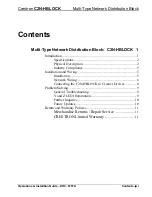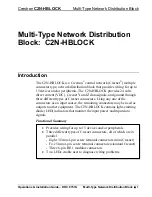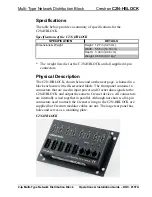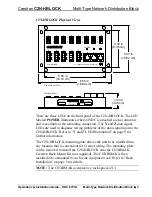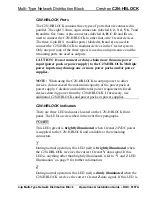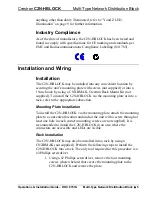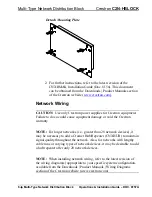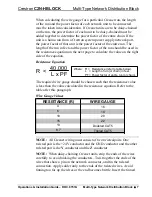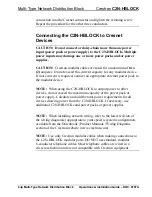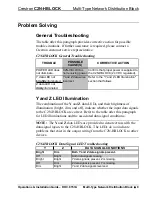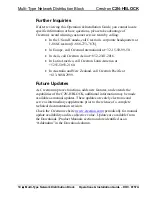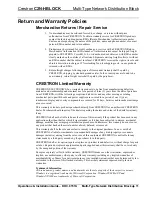
Crestron
C2N-HBLOCK
Multi-Type Network Distribution Block
When calculating the wire gauge for a particular Cresnet run, the length
of the run and the power factor of each network unit to be connected
must be taken into consideration. If Cresnet units are to be daisy-chained
on the run, the power factor of each unit to be daisy-chained must be
added together to determine the power factor of the entire chain. If the
unit is a home-run from a Crestron system power supply network port,
the power factor of that unit is the power factor of the entire run. The
length of the run in feet and the power factor of the run should be used in
the resistance equation on the next page to calculate the value on the right
side of the equation.
Resistance Equation
R = Resistance (refer to table below).
L = Length of run (or chain) in feet.
PF = Power factor of entire run (or chain).
R < L x PF
40,000
Where:
The required wire gauge should be chosen such that the resistance value
is less than the value calculated in the resistance equation. Refer to the
table after this paragraph.
Wire Gauge Values
RESISTANCE (R)
WIRE GAUGE
4
16
6
18
10
20
15
22
13
Doubled CAT5
8.7
Tripled CAT5
NOTE:
All Cresnet wiring must consist of two twisted-pairs. One
twisted pair is the +24V conductor and the GND conductor and the other
twisted pair is the
Y
conductor and the
Z
conductor.
NOTE:
When daisy-chaining Cresnet units, strip the ends of the wires
carefully to avoid nicking the conductors. Twist together the ends of the
wires that share a pin on the network connector, and tin the twisted
connection. Apply solder only to the ends of the twisted wires. Avoid
tinning too far up the wires or the end becomes brittle. Insert the tinned
Operations & Installation Guide – DOC. 8157A
Multi-Type Network Distribution Block
•
7



